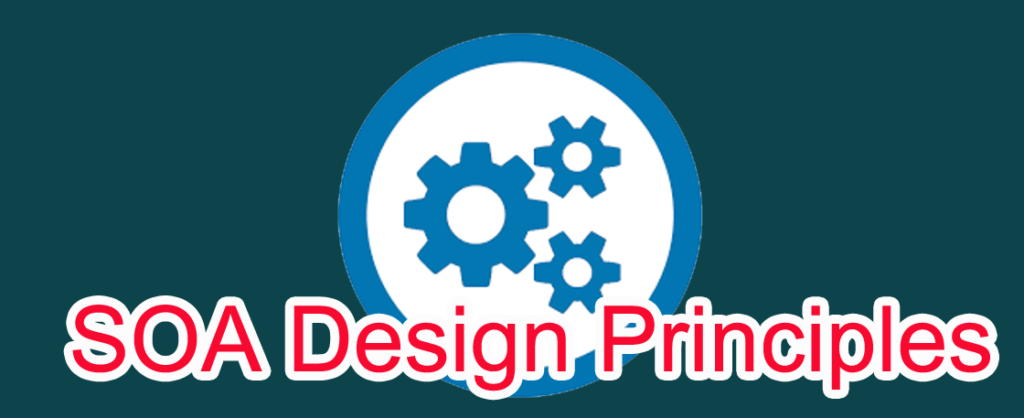SOA (Service Oriented Architecture) has remained a buzzword in the IT industry since so long. Discussions on architectural advancements in software industry are incomplete without discussing SOA and SOA Design Principles. In this article, I will discuss Service Oriented Architecture basics and SOA Design Principles will be discussed in detail.
What is SOA? Service Oriented Architecture Basics
SOA (Service-Oriented Architecture) is a software design architectural approach which focuses on loosely coupled, independently deployable software components or granular pieces known as services. These fine-grained services communicate with each other through a well-defined interface, usually over a network, to achieve certain business goals.
SOA architecture helps organizations to build complex software solutions in a standardized, sophisticated manner in the form of smaller reusable services. These individual services conceptualized and built through Service Oriented Architecture are considered highly flexible and scalable. SOA breaks down giant monolithic applications into smaller, reusable services. This approach helps achieving greater interoperability, maintainability, and ease of deployment.
SOA is based on certain design principles which are the core of Service Oriented architecture. In the below section, we will discuss in detail about SOA Design Principles and each of these principles will be elaborated in simplified manner.
SOA Design Principles: Principles of Service Oriented Architecture
Service-Oriented Architecture is based on certain core principles. These SOA Design Principles rightly characterize this architectural approach. 8 Principles of Service-Oriented Architecture are discussed in below section with details.
1. Standardized Service Contract
Services in SOA architecture are made available based on its well-defined blue-print; i.e. Service Contract. Service contract needs to be formally standardized by meeting a set of standards to have a uniform service design.
In the EAI journey of any organization, Services designed in legacy SOAP format or in REST format–should be based on formal data models, standardized data formats, applicable and supported protocols etc. Under standardized contracts, services should be designed by explicitly and clearly stating its interfaces, operational capabilities and underlying security protocols.
SOAP services are standardized in the form of WSDL contracts, REST services make their blue-print available in the form of OpenAPI/Swagger definitions or in the RAML format.
2. Loose Coupling
SOA emphasizes that individual Services should be autonomous and shouldn’t be excessively dependent on each other. Through this loose coupling, agility can be greatly achieved in the design process of software applications.
Individual Services in SOA architecture are eligible to interact with each other through a well-defined interface, reducing dependencies among them. This helps during future enhancements, redesigns of services in a much independent manner.
3. Service Abstraction
Service Abstraction design principle stresses that no internal details of the service should be made available unnecessarily. Services should be made available only through standardized contracts and expression of information should be limited to only what is necessary !
Internal details of service implementation, technical aspects of the service, tools and technologies being used should be abstracted completely.
4. Service Reusability
SOA architecture advocates re-using the capabilities as much as possible instead of re-inventing the wheel. It works on the principle of Design Once–Use More.
When implementing services, a critical and smart thinking is inevitable to identify re-usable patterns and then building services which can be re-used as and when desired. Re-usable services with SOA architecture greatly help organizations to reduce cost and maintain standards.
5. Service Autonomy
Services built through SOA architecture should have strong control over themselves. Services should be controlling its internal logic at its own and should be resilient and stable enough to serve its clients in its own means.
Autonomous services should be encapsulating its required dependencies under its own umbrella as much as possible. Autonomous services increase reliability and independence in an organization’s digital eco-system.
6. Service Statelessness
Services are ideally supposed to be stateless and not responsible for the headache of maintaining state of its repeated executions. Responsibility of maintaining any states should be left to the client itself instead of adding any such unnecessary burden on the services.
Stateless services help achieving better performance with higher throughput and less overheads.
7. Service Discoverability
Services should be made available to its intended clients in the best and easiest possible way. Services should be discoverable and clients should be able to benefit from the service capabilities as and when required.
Services should be made available through service registry or any other similar service catalog depending upon your organization’s technical infrastructure.
8. Service Composability
To have a strong service based synergy, services implemented through Service-Oriented Architecture should be composable. Composability enables organizations to club together or combine services to expose business capabilities in a packaged manner.
SOA Design Principles: Video Tutorial
In the below video tutorial on TutorialsPedia YouTube Channel, all of these SOA Design Principles have been discussed in a much simplified manner. This video will rally help you to Learn SOA in general and SOA Design Principles in specific as a beginner or intermediate learner.
If you have any question or feedback, feel free to comment below.

